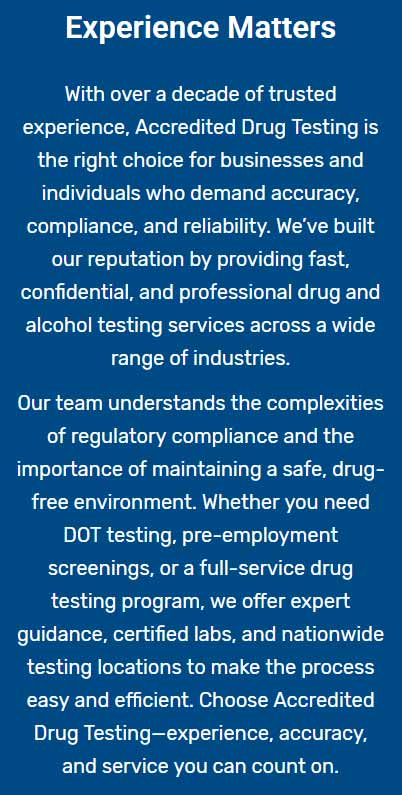Nationally Accredited, Expert Led, Training in Vestavia Hills, AL
DOT oral fluid testing represents an innovative leap forward, rapidly earning its status as the preferred drug testing modality. Known for its unbeatable blend of convenience and precise reliability, the need for adept oral fluid collectors is greater than ever. Enrolling in our DOT oral collector training facilitates mastery over the entire arc of collecting, handling, and meticulously documenting oral fluid specimens, all while adhering to the stringent regulations set by the DOT. Such training not only equips you with industry-leading operational knowledge but also significantly reduces circumstantial errors and elevates your professional standing in the field.
Seize this chance to position yourself as a vanguard in the realm of drug testing. Our meticulous DOT oral fluid collection training scheme has been thoughtfully designed to be approachable, rich in expertise, and precisely oriented to hone your capabilities. Begin your journey toward distinguished certification today and integrate yourself into the elite cadre of qualified oral fluid collection specialists whose skills are profoundly esteemed across industries.
Delivered in trusted association with the National Drug and Alcohol Screening Association (NDASA), our robust training and proficiency mock exercises epitomize rigorous practical learning. Attaining success in both the structured training and proficiency mock demonstrations illustrates unparalleled proficiency, thereby granting students a prestigious Certificate of Qualification, officially co-signed by Accredited Drug Testing and the NDASA.
The surge in DOT oral fluid testing signifies a pivotal threshold for aspiring collectors determined to statutorily exceed the burgeoning industry expectations. Through diligent focus on industry standards, aspirants can not only demonstrate preparedness but can remarkably pioneer new standards in professional drug testing excellence.




